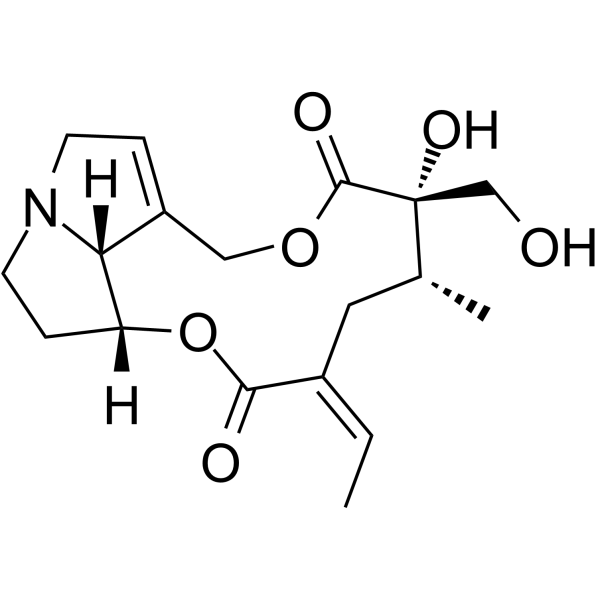Retrorsine |
| Catalog No.GC63171 |
Retrorsine은 자연적으로 발생하는 독성 피롤리지딘 알칼로이드입니다.
Products are for research use only. Not for human use. We do not sell to patients.

Cas No.: 480-54-6
Sample solution is provided at 25 µL, 10mM.
Retrorsine is a naturally occurring toxic pyrrolizidine alkaloid. Retrorsine can bind with DNA and inhibits the proliferative capacity of hepatocytes. Retrorsine can be used for the research of hepatocellular injury[1][2].
Retrorsine (60-240 μM; 24 hours) significantly reduces HSEC-CYP3A4 cells viability and GSH levels, and increases formation of pyrrole-protein adducts[3].
Retrorsine (30 mg/kg; i.p.; twice) impairs liver regeneration in the PBL model not only by an S or G2/M phase block, but also by a block located before the G1/S transition of the cell cycle[4].
[1]. F J Cubero, et al. Hepatic proliferation in Gunn rats transplanted with hepatocytes: effect of retrorsine and tri-iodothyronine. Cell Prolif. 2005 Jun;38(3):137-46.
[2]. S Laconi, et al. Liver regeneration in response to partial hepatectomy in rats treated with retrorsine: a kinetic study. J Hepatol. 1999 Dec;31(6):1069-74.
[3]. Yao Lu, et al. Establishment of a novel CYP3A4-transduced human hepatic sinusoidal endothelial cell model and its application in screening hepatotoxicity of pyrrolizidine alkaloids. J Environ Sci Health C Toxicol Carcinog. 2020;38(2):169-185.
[4]. Christian Picard, et al. Retrorsine: a kinetic study of its influence on rat liver regeneration in the portal branch ligation model. J Hepatol. 2003 Jul;39(1):99-105.
Average Rating: 5 (Based on Reviews and 34 reference(s) in Google Scholar.)
GLPBIO products are for RESEARCH USE ONLY. Please make sure your review or question is research based.
Required fields are marked with *




















